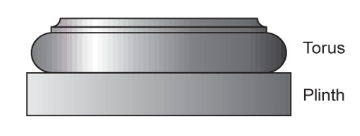Table of Contents
Preface (7/9/2024)
Vitruvius (7/16/2024)
Doric Order (7/23/2024)
Ionic Order (7/30/2024)
Corinthian Order (8/6/2024)
Tuscan Order (8/13/2024)
Composite Order (8/20/2024)
Intercolumniation (8/27/2024)
Columns in the Modern Space (9/3/2024)
Preface
There are certain architectural elements that can be found throughout virtually all civilizations and time periods, perhaps none more iconic than the column. While the ancient Egyptians, Persians and more utilized columns, the most recognizable ones come from Ancient Greece and Rome, who established the classical orders of architecture that have stood the test of time. Over the course of the next few weeks, we are going to work through a series of blog posts on the history of those Architectural orders, what differentiates them from each other and the most famous examples of each.
Throughout this series there will be references to different components of columns which may use terminology that is unfamiliar to the reader. As such, I did want to provide a quick overview of some of those terms here. Generally speaking, columns are made up of 3 components: shaft, capital and base. The shaft of the column is the most substantial part, making up the vertical height of the column. Shafts can be either round or square in design. Round shafts can either be plain or fluted for a more decorative look. A fluted column has vertical divots routed into the column. Historically round columns are made with an entasis taper, meaning the top diameter of the column shaft is slightly smaller than the bottom diameter, with a gradual taper beginning 1/3rd up the shaft. Tapered columns often tend to have a neck ring, called an astragal, molded into the shaft. A more modern design is non-tapered columns, which are the same diameter throughout the height. Below is a reference guide showing these different styles.

In addition to non-tapered columns, a more modern trend is square column shafts. These are often used in both load bearing applications, and as decorative wraps for existing load bearing pillars. Square shaft columns are available in non-tapered and tapered, and have in addition to plain designs have more style options such as single and double raised panel, recessed panel, fluted and even fretwork!

The next component we will discuss is the bottom decoration, called a base. Bases do come in a couple of different styles and configurations we will cover in future posts, but most bases are made up of two components, a square plinth and a rounded portion called the torus. In some cases, the column shaft sits atop the base, and in other more modern applications it acts as a decoration around the shaft which runs through the center of the base.

The final component we will discuss is the top decoration, or capital. The style of capitals has a much greater range than the base styles, with varying degrees of decoration based on the architectural order. These capital styles will be explored in greater detail in their respective sections, but for reference the most common, plain capital is much like the base shown above, made up of a square abacus and a rounded echinus.

Much like the rest of architectural history, we as a company have our roots tied to these timeless designs, officially launching in 1998 in Orange County, California as Pacific Columns. We pride ourselves on being experts on these (as well as countless other products) and by the end of this series we hope to share some of that expertise, so next time you come across a column you can quickly identify it and understand its historical impact.


